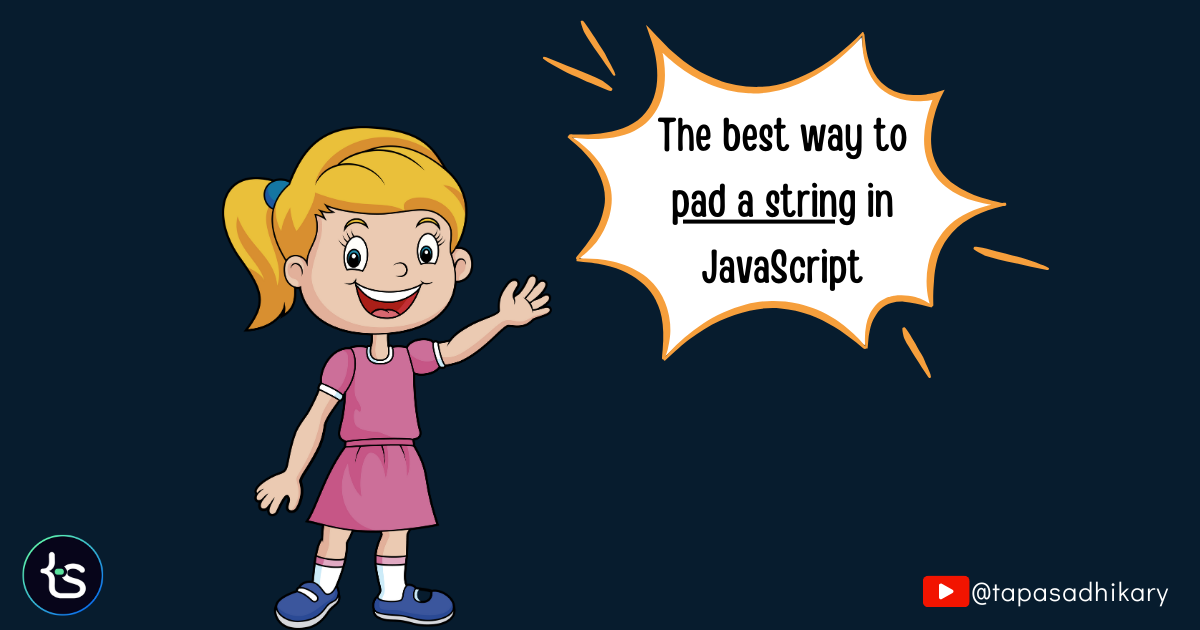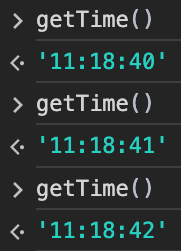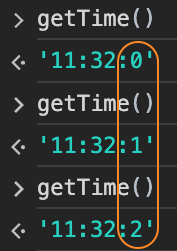
The best way to pad a string in JavaScript
JavaScript provides multiple ways to solve the same problem. However, we need to use the one that's best. Let us learn the best way to pad a string.
Padding a string means filling up a string with another character sequence or string. For example, you have written a function to the time formatted in hh:mm:ss format.
function getTime() {
const hour = new Date().getHours();
const min = new Date().getMinutes();
const sec = new Date().getSeconds();
return `${hour}:${min}:${sec}`
}
When you run the above code, it will return a time format string like:

However, you will also get the output where either of hour, minute, or second value may appear in the single digit:

Now, you may want to pad the single-digit value with an additional 0 in the beginning so that the format always remains as hh:mm:ss.
One of the ways you can handle it is by checking if the hour, minute, or second is in single digits and then appending an 0 in front of it. It works.
function getTime() {
let hour = new Date().getHours();
hour = hour <=9 ? `0${hour}` : hour;
let min = new Date().getMinutes();
min = min <=9 ? `0${min}` : min;
const sec = new Date().getSeconds();
sec = sec <=9 ? `0${sec}` : sec;
return `${hour}:${min}:${sec}`
}
But there is a better way!
Welcome the padStart() method
The padStart() method of JavaScript string helps you to pad a string with another string until it reaches a desired length. The padding takes place from the beginning of the string. Finally, the method returns the padded string.
const digit = "9";
const paddedDiggit = digit.padStart(4,"0");
console.log(paddedDiggit); // Output is 0009
In the above code snippet, we have used the padStart() method to pad a string(9) with another string 0, until the padded string length becomes 4. Hence, the output is 0009.
The padStart() methods can take up to two parameters:
padStart(targetLength, padString);
The padString parameter is optional. Its default value is the Unicode "space" character.
Let's solve the time format problem
Now, let us solve the time format issue using the padStart() method. So, we need to pad the single digits with an 0 in the front and make the padded string a double-digit string.
We can write a function like,
function padByZero(input) {
return input.toString().padStart(2, '0');
}
This above function accepts an input parameter and uses the toString() method to convert it into a string. Then, it calls the padStart() method with two arguments, the first one being the padded string length and the second one being the string to pad with.
Hence padByZero(8) will return 08. We can now use the padByZero() function in the getTime() function to pad the single-digit values.
function getTime() {
let hour = padByZero(new Date().getHours());
let min = padByZero(new Date().getMinutes());
let sec = padByZero(new Date().getSeconds());
return `${hour}:${min}:${sec}`
}
That's it! Now, the output format will always be hh:mm:ss.
There is a padEnd() method too
The padEnd() method of JavaScript string helps you to pad a string with another string until it reaches a desired length. Finally, the method returns the padded string. In this case, the padding takes place from the end of the string.
const digit = "9";
const paddedDiggit = digit.padEnd(4,"0");
console.log(paddedDiggit); // Output is 9000
That's all. Thanks for reading it. I hope it was insightful. If you liked the tutorial, please post likes and share it in your circles.
You can also find a YouTube Shorts on this topic:
Before We End...
Let's connect. I share web development, content creation, Open Source, and career tips on these platforms.